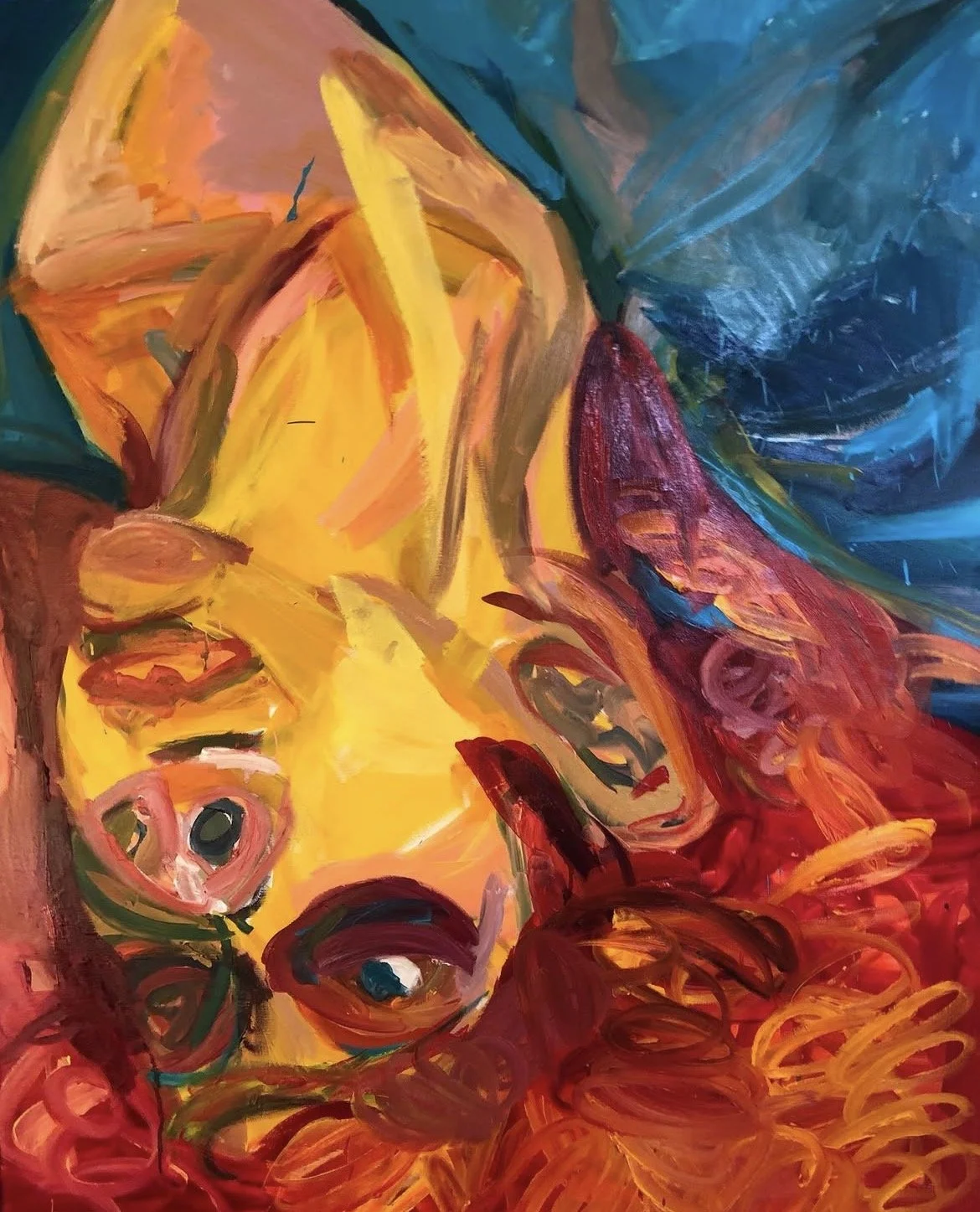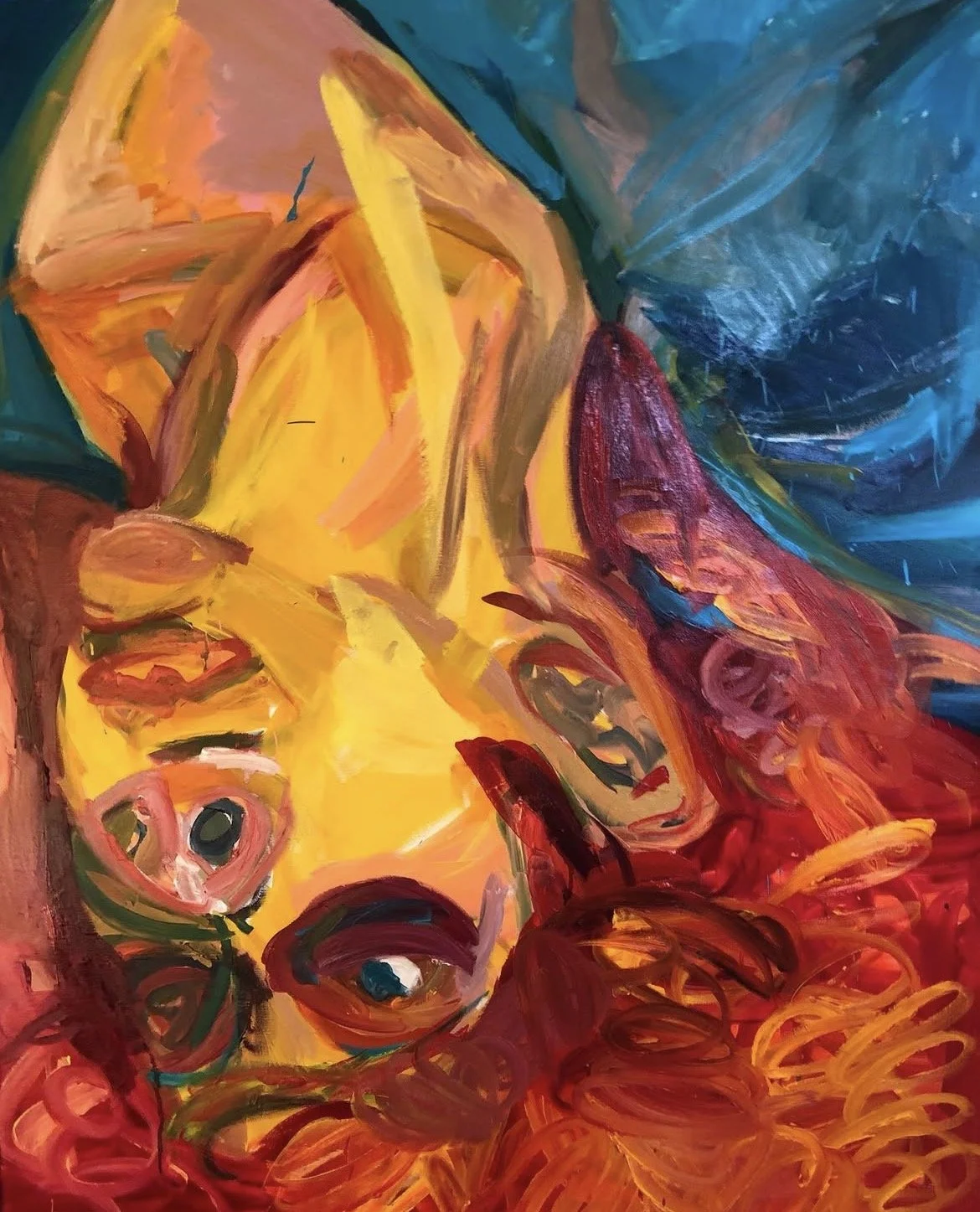Ćwiczenia z upadania
Michał Borowik
Kto doświadcza świata? Nasze żyjące ciało. To ono jest siedliskiem wszystkich odczuć, myśli, uczuć, marzeń, planów, snów, wspomnień. Nasze funkcjonowanie emocjonalne, intelektualne, duchowe zakotwiczone jest w materii ciała. To nasze żywe ciało czuje i myśli, jest ciałem uduchowionym." – Jolanta Brach-Czaina, Ciało współczesne, 2000
Monika Misztal nowym cyklem obrazów “Ćwiczenia z upadania” przenosi nas w malarski świat symulacji osobistych przeżyć. Energicznymi pociągnięciami pędzla eksploruje abstrakcyjne i figuratywne momenty powolnego upadania oraz osamotnienia w nadchodzącym bólu. Misztal testuje cielesność, jej fizjologiczno-emocjonalne uwikłanie i przesuwa jednocześnie granice naszej percepcji. Wskazuje, że ciało wszystko pamięta, a odpowiedni „trening” upadków może istotnie zmniejszyć ryzyko ewentualnych powikłań. – Posiadając umiejętność upadania, ograniczamy nasz strach przed samym upadkiem – mówi malarka.
Dla Misztal ciało przestaje być postrzegane wyłącznie jako fizjologiczna maszyna sterowana przez umysł, zaczyna być traktowane jako kompletny obraz człowieka. Stanowi to jej odpowiedź na wiele mentalnych i społecznych oraz kulturowych wytłumień. Zwraca się ku wnętrzu, temu co w potocznym mniemaniu jawi się jako nieestetyczne. Stara się również zwrócić naszą uwagę na podlegające zużyciu, podatne na upadki i okaleczenia ciało. Misztal swoimi obrazami nie opowiada bajek, nie obiecuje happy endu, to byłoby oszustwo. Przypomina nam, że w większości sytuacji nie mamy wpływu na potencjalny upadek, ale każdy ma kontrolę nad tym, jak sobie z tym faktem poradzić. – Tylko wtedy podniosę się, kiedy będę umiała upaść, upadam by wstać, wstaję by lecieć dalej i wyżej – mówi Monika.
Exercises in Falling
Text by Michał Borowik
Who experiences the world? Our living body. It is the site of all sensations, thoughts, feelings, dreams, plans, visions, and memories. Our emotional, intellectual, and spiritual functioning is anchored in the materiality of the body. It is the living body that feels and thinks—a body imbued with spirit.
— Jolanta Brach-Czaina, The Contemporary Body, 2000In her latest painting cycle Exercises in Falling, Monika Misztal invites viewers into a painterly world that simulates deeply personal and affective experiences. Through vigorous brushwork, she navigates both abstract and figurative moments of gradual collapse and the solitude that accompanies the anticipation of pain. Misztal interrogates corporeality—its physiological and emotional entanglements—while simultaneously challenging the perceptual boundaries through which we apprehend the body.
She suggests that the body retains all memory, and that appropriate "training" in falling may substantially reduce the risk of injury—both literal and metaphorical.
"By learning how to fall, we reduce our fear of falling itself," the artist notes.
For Misztal, the body is no longer merely a physiological apparatus governed by the mind, but a complete and integrated image of the human being. Her work offers a critical response to various forms of psychological, social, and cultural suppression. She turns inward—toward what is often regarded as unaesthetic in the everyday perception of the body—and seeks to draw attention to the material body: vulnerable to wear, to collapse, and to wounding.
These paintings do not offer comforting narratives; they neither seduce with fantasy nor promise a redemptive conclusion. Such gestures, the artist implies, would constitute a betrayal of lived experience. Instead, Misztal’s work underscores a more sobering reality: that while we often lack control over the inevitability of falling, we retain agency in how we respond to it.
"I can only rise if I know how to fall. I fall in order to rise, and I rise to fly—further and higher," says Misztal.
The women depicted in Misztal’s paintings are not passive figures awaiting rescue from a mysterious savior who will liberate them from a state of stagnation or discomfort. Rather, they appear to inhabit a kind of suspended space—a temporary void in which inaction becomes a mode of presence. In A Break for Another Cigarette, Misztal constructs a dialogical relationship between canvases, reflecting on the condition of the human being, their earthly existence, and the existential trajectory from nowhere to nowhere—subjected to a continuous cycle of ascents and descents.
Motifs such as chairs or garments merging into the surrounding landscape evoke states of stagnation and an indistinct hope. The condition of enforced stillness, dispossession, and objectification is rendered with particular clarity in the tentatively titled work Tied-Down. Here, a motionless woman seated on a chair is not simply a study in figuration, but a manifestation of the inseparable relationship between the body and its surrounding world. The painting conveys a palpable tension and sense of expectancy, though the object of that anticipation remains undefined.
Misztal’s work insists on a fundamental truth: that one need not be visibly wounded in order to experience pain—to suffer is to be human. It is precisely this assertion that constitutes the power of her painting.

